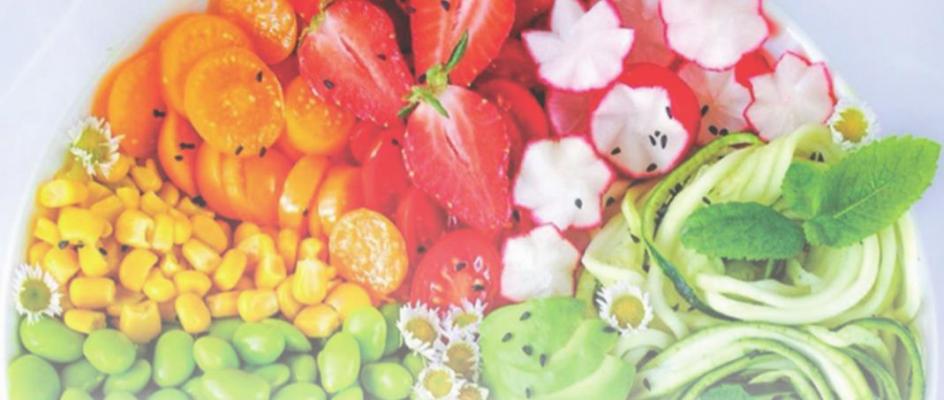Dietary Decline
As we age, we need fewer calories, yet we need those calories we eat to be of higher quality. But older adults in the U.S. seem to be losing that battle.
A recent study in JAMA Network Open found the number of adults aged 65 and older in the U.S. with a poor diet quality increased from 51% to 6% from 2001 to 2018, while the percentage of those who had an ideal diet remained low at 0.4%. The proportion of those with intermediate diet quality significantly decreased from 49% to 39%.
Participants included a total of 10,837 adults ages 65 or older who completed a 24-hour dietary recall several times over the years of the study. Researchers scored diet quality using the American Heart Association Diet Score and the Healthy Eating Index.
Researchers said older adults ate more processed meats, sugar-sweetened beverages and foods with sodium, while intake of fruits and vegetables, fish and whole grains decreased.
There may be a lot of reasons for that dietary decline -- income levels, losing a spouse, depression -- but this national trend is one we should all be concerned about. Poor diet quality is a major risk factor for chronic diseases, disability, frailty and death among older adults. It’s predicted that the number of adults aged 65 years or older will more than double by 2060, accounting for nearly a fourth of the U.S. population, according to the U.S. Census Bureau.
We know a healthy diet is crucial for all of us, but especially for older adults to maintain physical and mental health.
Here’s the good news: It’s never too late to start eating healthy, no matter your age. Can you add some berries to your oatmeal or cereal? Snack on roasted chickpeas instead of chips? Cook at home more instead of going out? Try adding two vegetables to your evening meal instead of one? Drink a bottle of water with your morning meds to start your day?
When in doubt, throw some color on your plate -- bright greens from crunchy vegetables or vibrant reds from tangy fruit -- to give a healthy boost. Pack your lunch to control portion sizes and add fruits and vegetables.
Choose foods with less sodium and less sugar. Rinse canned foods or choose “no salt added”. Buy fresh poultry, seafood and lean cuts of red meat and pork rather than processed meat and poultry. When it comes to sugar, flavor your low-fat plain yogurt with fresh fruit instead of purchasing flavored yogurt and choose fresh fruit as an afterdinner treat. Reduce your consumption of sugar-sweetened beverages by drinking water flavored with fruit.
Q and A
Q: Can potassium help my heart?
A: Reducing sodium intake and increasing potassium intake may help reduce the risk of cardiovascular events, like heart attack or stroke, according to new research. In a meta-analysis of six studies that included more than 10,000 healthy individuals, those with the highest sodium intake had a 60% higher risk of a cardiovascular event than those with the lowest sodium intake. Those with the highest potassium intake had a 31% lower risk than those with the lowest potassium intake. The study was published in the November 2021 New England Journal of Medicine.
RECIPE
Registered Dietitian Ellie Krieger, host of Food Network’s “Healthy Appetite,” has a wonderful cookbook, “So Easy,” that makes healthy food doable. This recipe for Garlic Basil Shrimp is from that cookbook.
GARLIC BASIL SHRIMP
2 tablespoons olive oil
1 1/4 pounds large shrimp (20 to 25 per pound), peeled and deveined
3 garlic cloves, minced
1/8 teaspoon crushed red pepper flakes, or more to taste
3/4 cup dry white wine
1 1/2 cups grape tomatoes, halved
1/4 cup finely chopped fresh basil
Salt and freshly ground black pepper, to taste 3 cups cooked orzo pasta,
3 cups cooked orzo pasta, preferably whole wheat
Heat the oil in a large heavy skillet over medium-high heat until hot but not smoking, then add the shrimp and cook, turning over once, until just cooked through, about 2 minutes. Transfer with a slotted spoon to a large bowl. Add the garlic and red pepper flakes to the oil remaining in the skillet and cook until fragrant, about 30 seconds. Add the wine and cook over high heat, stirring occasionally, for 3 minutes. Stir in the tomatoes and basil and season the sauce with salt and pepper. Return the shrimp to the pan and cook just until heated through. Serve with orzo. Serves 4 (serving size: 1 cup shrimp mixture and 3/4 cup orzo).
Per serving: 380 calories; 35 grams protein; 35 grams carbohydrate; 10 grams fat (1.5 grams saturated); 215 milligrams cholesterol; 4 grams fiber; 490 milligrams sodium.
Charlyn Fargo is a registered dietitian with SIU Med School in Springfield, Illinois. For comments or questions, contact her at charfarg@aol.com or follow her on Twitter @NutritionRD. To find out more about Charlyn Fargo and read features by other Creators writers and cartoonists, visit the Creators website at www.creators.com.


